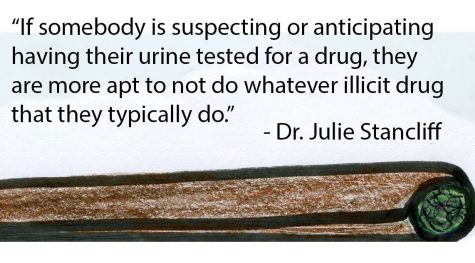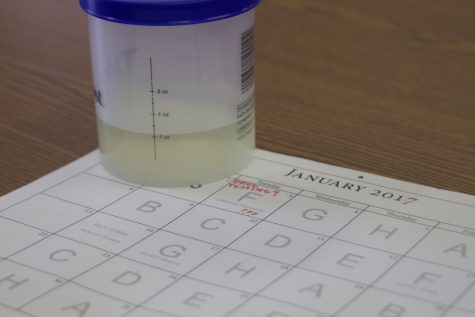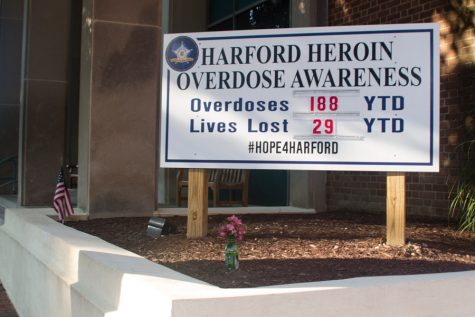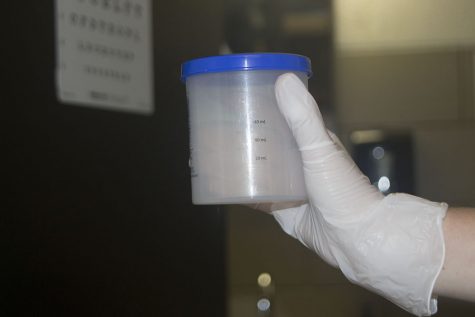Will this be effective?
December 27, 2016
It’s August 26. Groups of students pass from room to room to hear the usual speeches from school administrators to start the year. However, in the lower gym, a dark cloud hangs in the air. This is the room where each group hears the news that the new drug and alcohol policy, which had been announced over the summer, will soon be enforced.
While students were thinking about their recent and future decisions, they probably weren’t thinking about the massive amount of planning that went into the policy.
To develop the new drug testing policy, the school conducted research to determine how to address the needs of the community, according to Vice Principal of Affairs and Technology Brian Powell.
First, administrators looked at precedents set by other schools to help create the drug policy. “[We] looked at a lot of school programs – public, private, NCAA – [and] we eventually found Spalding, [and] we focused on them,” Powell said. Powell still contacts them when questions arise.
The Dean of Students at Archbishop Spalding High School declined to comment to The Patriot about the policy. However, one Spalding junior said that the school operates under a three strike system, so if students fail the drug test three times, they will be expelled.
John Carroll’s strategy for developing their own policy followed in the footsteps of other modern high schools. The Patriot contacted Principal Mike Mauthe of the St. Francis Xavier High School in Appleton, WI, who looked at multiple sources from his community and nationally when he was implementing a drug policy in his own Catholic school.
“We met several times with representatives of testing companies to understand how the testing would work, what it would screen for, and what the costs would be. We also interviewed students, parents, and administrators from other schools around the country that have instituted drug testing program. Finally, we studied our own school culture, risk behavior surveys, and the success rates of drug testing programs,” Mauthe said.
JC’s research into the medical aspects of drug testing helped to develop the logistics behind the policy such as what drugs will be tested for and how to best test for them.
Policy creators consulted Dr. Julie Stancliff, a psychiatrist and parent to three current JC students, for a medical perspective on drug testing. Stancliff maintained contact with school nurse Michelle Webster and Senior Harford County Health Department Administrator Beth Jones.
According to Stancliff, a drug test or possible consequence of rehab would probably be enough to deter drug use, especially among a younger population.
“If somebody is suspecting or anticipating having their urine tested for a drug, they are more apt to not do whatever illicit drug that they typically do, or they don’t drink alcohol so that their drug test comes back negative. [Then] there would be no consequence to [a] positive drug test, as it would be negative,” Stancliff said.
 However, Stancliff believes that students would be most deterred from using illicit drugs if there was a negative consequence associated with failing the drug test. She recommended increasing levels of treatment if a student continued to test negatively in the form of rehab or outpatient programs.
However, Stancliff believes that students would be most deterred from using illicit drugs if there was a negative consequence associated with failing the drug test. She recommended increasing levels of treatment if a student continued to test negatively in the form of rehab or outpatient programs.
“Drug testing works great and is very effective for traditional drugs. However, for synthetic drugs like bath salts and spice, it is more difficult,” Drug Enforcement Administration Spokesperson Russ Baer said. “I feel that [drug testing] is just another tool to keep illegal drugs out of the school system and to help students maintain a clear mind and healthy body,” he said.
According to a study by the U.S. Department of Education in 2010, students subjected to Mandatory-Random Student Drug Testing (MRSDT) used illicit substances less than students who did not have to worry about being tested. 16.5 percent of MRSDT students reported drug use within the past 30 days versus 21.9 percent of students who went to schools without testing policies. However, that same study found that a drug test had no effect on students’ intentions to use those substances in the future.
The National Institute of Drug Addiction website states that drug testing can be relatively ineffective if no further measures are taken to educate the students. It says, “If testing is done, it should be a component of broader prevention, intervention, and treatment programs, with the common goal of reducing students’ drug use.”
Baer also believes that a successful drug-prevention program should be a conversation-starter between students and their peers. “Teenagers are more likely to listen to their peers and their friends and need to help each other to understand how dangerous drugs are,” Baer said.
Currently, the only drug education that students receive at JC is in Health class during freshman year. However, students do not take Health if they are involved with STEM or band.
“I have always felt that one-third of the students have already experimented with drugs, one-third have made the decision to stay drug-free, and the other one-third are on the fence and are not sure what they are going to do,” Health teacher Teresa Gauthier said.
When Gauthier teaches drug education in Health, her aim is to reach and help the students who are undecided about whether or not they will use drugs. She also feels that the students’ families and the entire community should be supportive of her message.
“Although private schools can subject students to invasive searches that are not allowed in public schools, random searches are not a best practice for addressing concerns with youth choices about drug and alcohol use,” ACLU of Maryland Communications Director Meredith Curtis Goode said.

It is unclear whether or not this policy will be effective since each school has a different situation. In some places, like St. Francis Xavier High School, drug testing has been a positive change, according to Mauthe.
“Our data tells us that somewhere between four and eight percent of our student population typically reports drug usage of some sort. So far, our testing has had positive results for less [than] one percent. That is consistent with the improvement that other schools have reported,” Mauthe said.



